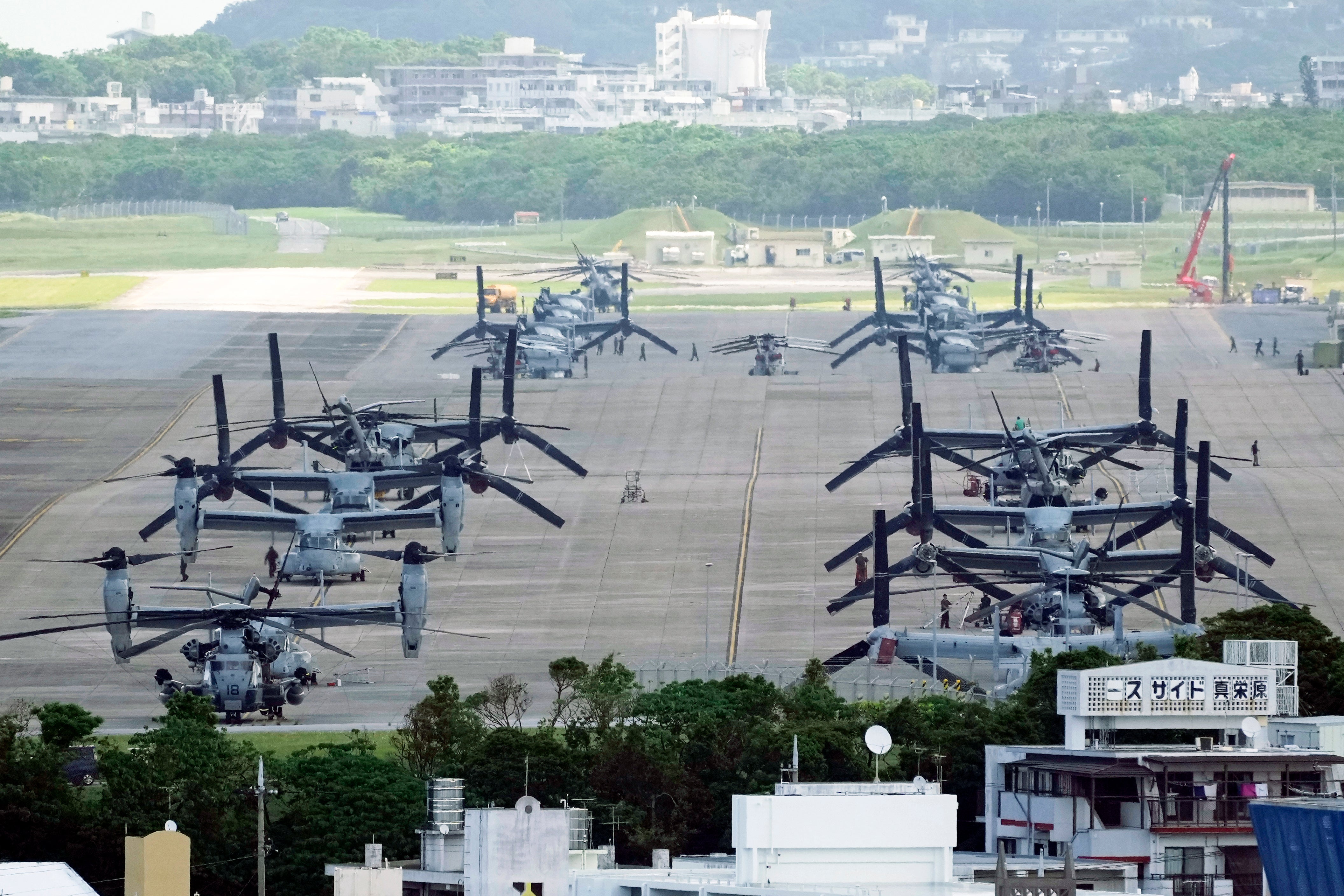Services prepare to brief Secretary Austin on a plan to get Ospreys flying again
The military services will take a key step toward getting the V-22 Osprey fleet back in the air as they lay out their plans Friday to Defense Secretary Lloyd Austin regarding safety concerns stemming from a fatal crash in Japan

The military services will take a key step toward getting the V-22 Osprey fleet back in the air as they lay out their plans Friday to Defense Secretary Lloyd Austin for addressing safety concerns stemming from a fatal crash in Japan, three defense officials said.
The U.S. fleet of about 400 Osprey tiltrotor aircraft has been grounded for 83 days following the crash of a U.S. Air Force Special Operations Command CV-22B on Nov. 29 in Japan that killed eight service members. It’s unclear how quickly Austin would make any decision on the matter.
The Air Force has said it knows what failed in the Osprey but still does not know why it failed. In the months since, the services have worked on a plan to mitigate the known material failure through additional safety checks and also by establishing a new, more conservative approach to how the Osprey is operated to safely work around the known issue, a third official, a senior defense official familiar with the V-22 program, said.
Japan is also the only international partner in the Osprey program and also grounded its fleet of 14 V-22s after the November crash, and a return to flight is a sensitive topic in the country, where public opinion on the Osprey is mixed. One of the defense officials said none of the U.S. Ospreys would return to flight until Japan has had an opportunity to weigh in on the military's plan.
After that, each service would decide on its own return to flight. Not all services would need to put their Ospreys back into operation simultaneously.
The officials spoke on the condition of anonymity because they were not authorized to speak about the Osprey decision process.
The militarywide grounding has left the deepest impact on the U.S. Marine Corps, which relies on more than 300 MV-22 Ospreys to conduct a major part of its aviation mission. Air Force Special Operations Command has about 50 CV-22B Ospreys and the Navy is planning on replacing its C-2 Greyhounds, which transport passengers to aircraft carriers, with more than two dozen CMV-22 Osprey variants.
The presidential fleet also uses a limited number of Ospreys to ferry White House staff, security personnel and reporters. Those have also been grounded since Dec. 6.
A small number of Marine Corps MV-22s in Djibouti have had an exemption to the grounding since Jan. 17 due to mission needs and have flown since then without incident.
The extraordinary decision in December to ground the aircraft militarywide reflected questions about the safety of the platform. Just before the November incident in Japan, an Osprey crash in August killed three Marines.
The first Ospreys only became operational in 2007 after decades of testing. But more than 50 troops have died either flight testing them or conducting training flights over the program’s lifespan.
The loss of the Osprey has had an operational impact, but a return to flight won't be immediate and will still be higher risk due to the amount of time those crews have not been flying.
Flight safety is dependent on pilots maintaining currency on an aircraft — meaning that they are flying regularly enough to be proficient in all types of flying, such as night missions, close formation flying and refueling. The senior defense official said it will take at least 30 days to get crews flying once the grounding is lifted.
The services have also had to ensure the aircraft are ready. Both the Air Force and Marine Corps have been running the Osprey’s engines; the Marines have been conducting ground movements to keep the aircraft working.